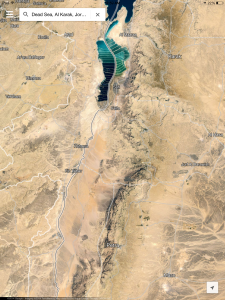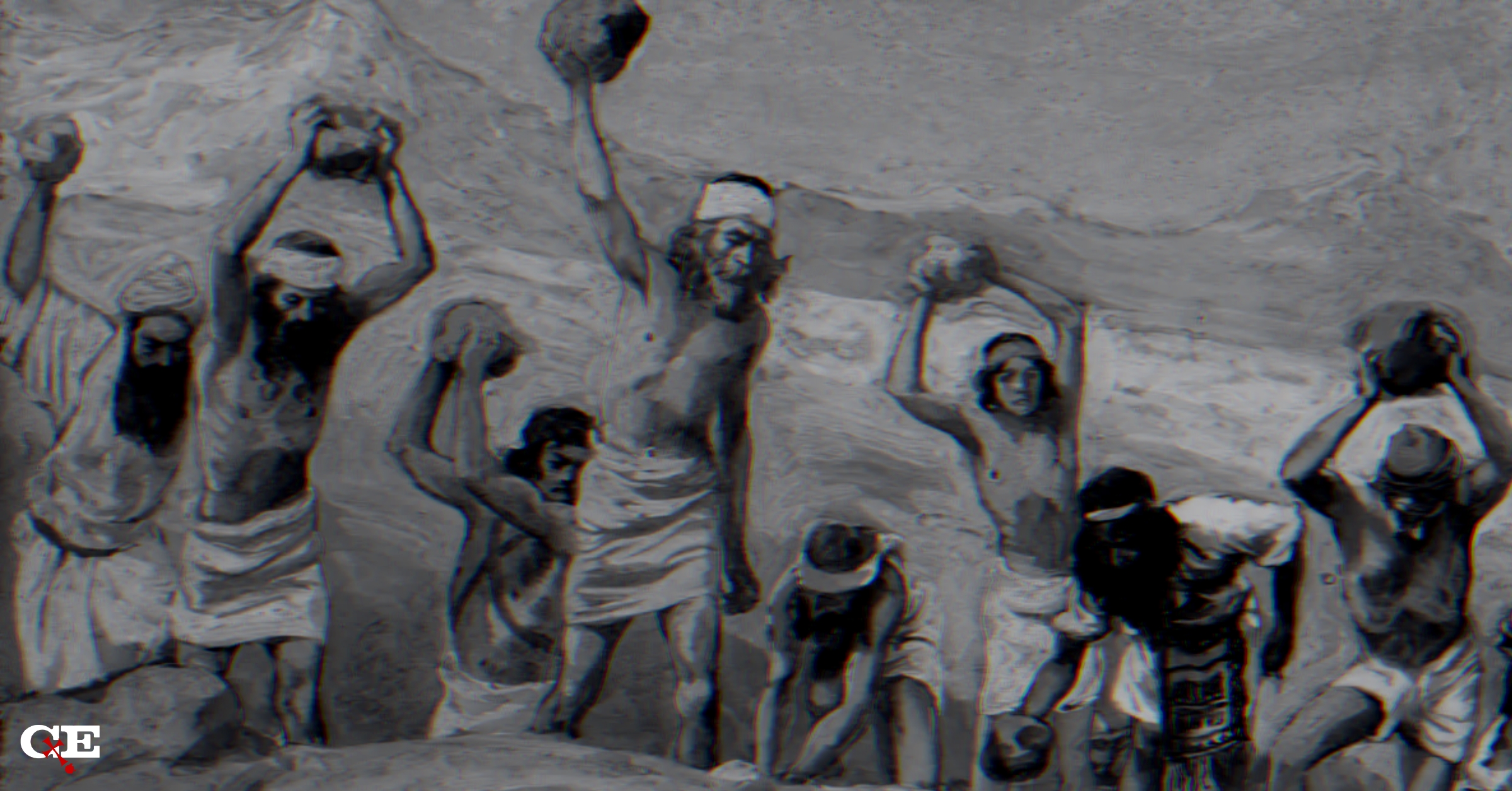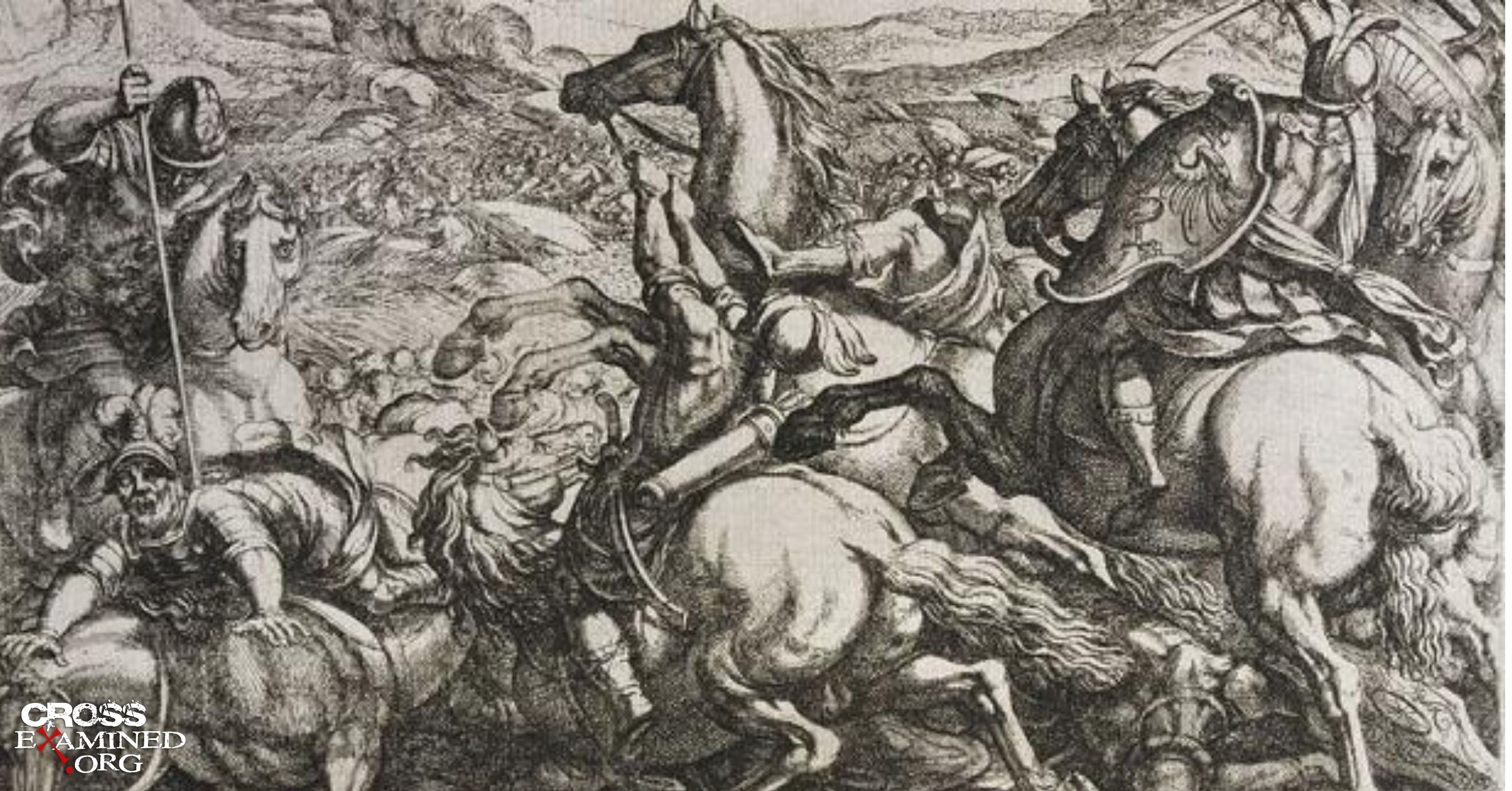Getting Over a Hump: Does the Lack of Camel Bones Disprove the Historicity of the Biblical Patriarchs?
In a recent article published in the journal Tel Aviv, Drs. Erez Ben-Yosef and Lidar Sapir-Hen of Tel Aviv University’s Department of Archaeology and Near Eastern Cultures, believe that they have pin pointed the date of the domestication of camels in Israel.
Their research is based primarily from data that they have collected from the Aravah (or Arabah) valley located in the southern Levant. The Arabah which is now desert, was a once verdant valley in antiquity. The Arabah is located just south of the Dead Sea and runs roughly north and south bordering Israel & Jordan (see image below)
The conclusion of their research indicates that camels were domesticated between the 9th – 12th century B.C.. An article which summarized the finding stated:
“In all the digs, they found that camel bones were unearthed almost exclusively in archaeological layers dating from the last third of the 10th century BCE or later — centuries after the patriarchs lived and decades after the Kingdom of David, according to the Bible.”[1]
The researchers seemed overly eager to point out the discrepancy with the Bible.
“Camels are mentioned as pack animals in the biblical stories of Abraham, Joseph, and Jacob. But archaeologists have shown that camels were not domesticated in the Land of Israel until centuries after the Age of the Patriarchs (2000-1500 BCE). In addition to challenging the Bible’s historicity, this anachronism is direct proof that the text was compiled well after the events it describes.[2]”
But, is it really the case that the biblical narratives which mention the patriarchs, were written after the events they describe? Or, could there be another explanation?
Camels and the Biblical Patriarchs
As far back as the book of Genesis, camels are can be linked with such Old Testament patriarchs as Abraham, Jacob, Laban and Moses. Camels are also mentioned periodically on various other occasions throughout later Old Testament history.
In Genesis 12:16 & 24:10-67 camels were used for a trip to Syria; they were also included as a bride price, and when Abraham was in Egypt camels were a small part of larger herds of other animals.
In Genesis 30:43; 31:34; 32:15 Jacob’s flocks along with Laban included camels as herd animals for Esau in the Seir area. In the Joseph narrative (Gen. 37:25) camels were used by Midianite-Ishmaelite traders caravanning to Egypt. In Exodus 9:3 camels were among the animals which were plagued during Moses’ day in Egypt.
Resolving the Camel Anachronism
For those of us who hold that the Old Testament patriarchal narratives are historical in nature, how does one solve the dilemma that this new research seems to reveal? Does the lack of camel bones in southern Israel (in the Arabah) during the Patriarchal period reveal the biblical narrative to be the work of late writers?
There are four good reasons why I do not believe this recent “discovery” is fatal to the historicity of the Old Testament patriarchs.
First of all, one of the many things that the history of archaeology in the Levant has shown over the past several decades is that one report is certainly not the last word on any given subject on ancient or biblical history. New research continues to overthrow long-held assumptions and biases against the Bible.[3]
Secondly, the archaeologists primary research area was conducted (according to their own report) in copper mining sites in the southern Arabah. According to the Bible, the patriarchs (Abraham, Jacob, et. al.), were pastoralists and semi-nomads whose travel itinerary would not have left them in any one place for any length of time. It is not surprising why little camel remains are discovered in the southern Levant.
Third, as Egyptologist Kenneth Kitchen points out, camels don’t actually figure that large in the lives of the patriarchs in any significant sense anyway. He writes:
“A common claim is that mentions of camels are anachronistic before circa 1100. What are the facts? In biblical terms, between roughly 2000 and 1200 their role is minimal.”[4]
In other words – yes – the biblical patriarchs owned camels, but it is not as if they were camel traders or camel herders. Camels played a small part in their lives.
But even so, other research suggests that camels have been present on the Arabian peninsula since at least 6,000 B.C.. From 2200-1200 B.C. rock art in Southwest Arabia and possible camel remains from Bir Risisim in the Levant suggest that camels were used for their milk and for transport.[5]
Camels were definitely present in the geographical area, as well as during the time of the patriarchs, so merely because we don’t find their remains in one specific location or archaeological period, certainly doesn’t mean that there are none at all.
This leads me to the fourth and final reason – Absence of evidence is not evidence of absence – a phrase often attributed to the great American Biblical archaeologist, Dr. Edwin Yamauchi. In chaper IV of Dr. Yamauchi’s great book, The Stones and the Scriptures (written 42 years ago) he rightly asks:
“How much of the evidence has survived the ravages of time? How many ancient sites have archaeologists been able to excavate? When does the lack of evidence for a biblical statement prove that an error is involved? Does archaeology offset the negative appraisal of the Bible developed by higher criticism? …Historians of antiquity in using the archaeological evidence have very often failed to realize how slight is the evidence at our disposal. It would not be exaggerating to point out that what we have is but a fraction of the possible evidence.”[6]
For more information on the historicity of the Old Testament Patriarchs see my previous articles here
[1]http://www.aftau.org/site/News2/2024116989?page=NewsArticle&id=19673&news_iv_ctrl=-1 (accessed, February 11, 14)
[2]Ibid.
[3] For example: the discovery of the “Tel-Dan inscription” in 1993-4 by Avraham Biram in Northern Israel, containing the extra-biblical name of David (in the Tel-Dan Stele)
[4] Kenneth A. Kitchen, On the Reliability of the Old Testament (William B. Eerdmans Publishing Company, Cambridge, U.K.; 2003), 338-9.
[5] See, Juris Zarins, “Camel,” in David Noel Freedman, Editor, The Anchor Bible Dictionary, Volume 1, A-C (New York, London: Anchor Doubleday, 1992), 824-6.
[6] Edwin M. Yamauchi, The Stones and Scriptures (Philadelphia & New York: J.B. Lippincott Company, 1972), 146-62.












Leave a Reply
Want to join the discussion?Feel free to contribute!